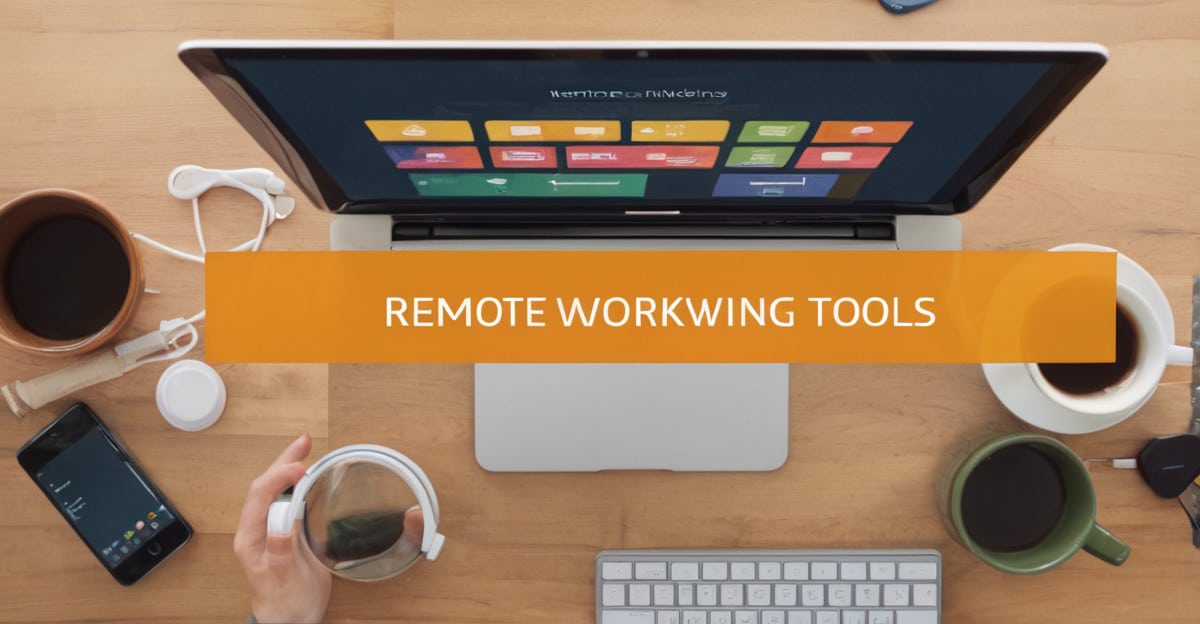
Introduction to the Hidden Gems of Remote Working Tools
Particularly in 2024, the field of remote employment has undergone significant change. While popular apps like Slack and Zoom make all the news, professionals are using a multitude of hidden gems of remote working technologies to increase productivity and optimize processes. We’ll explore several lesser-known tools that are gaining traction in the remote working world in this article. These technologies can improve your productivity and teamwork whether you are a digital nomad, freelancer, or remote team leader. Now let’s get started!
1. Notion: The All-in-One Workspace
In the realm of remote working tools, Notion has quietly emerged as the go-to tool. It unifies calendars, databases, task management, and note-taking onto a single, seamless interface. Experts adore Notion because of its adaptability and customizability. Project management boards, team wikis, and individual dashboards may all be made in one location. Notion is a secret gem that has the potential to completely transform your remote work experience because to its robust features and easy-to-use design.
One notable characteristic is the capacity to create a web of interconnected information by connecting various content categories. This facilitates team collaboration and the management of complicated tasks. Notion also provides a plethora of templates, ranging from project timelines to meeting notes, to help you get going quickly. It’s time to give Notion a try if you haven’t already and see how it can improve your workflow.

2. Miro: The Ultimate Online Whiteboard
Miro is another hidden gem that experts are using to facilitate remote collaboration. This online whiteboard tool allows teams to brainstorm, plan, and collaborate visually. Miro’s intuitive interface and extensive template library make it easy to create mind maps, flowcharts, and Kanban boards. Whether you’re conducting a virtual workshop or planning a project, Miro provides the visual tools you need to keep everyone on the same page.
One of Miro’s standout features is its real-time collaboration capability. Team members can simultaneously edit and comment on boards, making it feel like you’re all in the same room. Additionally, Miro integrates with popular tools like Slack, Jira, and Google Drive, ensuring seamless workflow integration. For remote teams looking to enhance their collaboration, Miro is a must-have tool.
3. Trello: Visual Project Management
Even if Trello isn’t exactly obscure, professionals in remote work nevertheless love it for its ease of use and eye-catching design. This extremely user-friendly program organizes tasks and projects using cards, lists, and boards. You can quickly move tasks through different stages of completion with Trello’s drag-and-drop interface, which gives you a clear visual picture of your progress.
Experts value Trello’s ability to adjust to different workflows. Trello may be tailored to your needs whether you’re in charge of a software development project, a marketing campaign, or your personal to-do list. Its functionality is further improved by its interaction with programs like Google Calendar, Evernote, and Slack. Trello is a project management application that’s easy to use and effective, so it’s worth looking into.

4. Loom: Effortless Video Communication
Because of its capacity to streamline communication, Loom is a hidden treasure that has grown in favor among specialists in remote work. This tool is perfect for conveying updates, instructions, or comments because it can capture and share video messages rapidly. You can record your screen, your webcam, or both at once using Loom to give your communications a more unique voice.
Because of Loom’s simplicity of use and time-saving benefits for textual communication, experts adore it. You can communicate your point more effectively by creating a video rather than writing lengthy emails or letters. Sharing your films with your team is made simple by Loom’s interface with well-known programs like Slack, Gmail, and Notion. Loom is a tool you ought to take into consideration if you wish to enhance communication and decrease miscommunication.
5. Asana: Comprehensive Task Management
Because of its many features and capabilities, Asana is a robust task management program that is frequently regarded as a hidden gem. Asana is a tool used by experts for work tracking, project management, and team collaboration. With the tool’s multiple perspectives (such as lists, boards, and timelines), you can choose the most effective method to see your work.
Asana’s ability to establish dependencies between tasks is one of its best features; it guarantees that your team completes tasks in the right order. Furthermore, Asana’s interface with Slack, Dropbox, and Google Drive facilitates a seamless integration into your current workflow. Asana is a highly recommended solution for remote teams who want to stay organized and on schedule.

6. Zapier: Automate Your Workflow
Experts use Zapier, a hidden gem, to automate workflows and cut down on time spent on tedious chores. With the help of this technology, which links several services and apps, you can build automated processes known as “Zaps.” You can free up time for more crucial work by using Zapier to automate processes like data entry, email notifications, and file transfers.
Zapier’s extensive integrations and user-friendliness are highly valued by experts. To make Zaps, you don’t need to know how to code; the program offers templates to get you started. More than 2,000 apps are integrated with Zapier, including well-known programs like Trello, Google Sheets, and Slack. Zapier is a service worth checking at if you want to improve productivity and optimize your workflow.
7. ClickUp: All-In-One Productivity Platform
A complete productivity platform, ClickUp integrates goal tracking, document collaboration, task management, and more. Experts love this hidden gem because of its extensive feature set and adaptability. With ClickUp, you can handle every part of your work from one location, saving you time and money by eliminating the need for different tools.
The ability to customize displays such as lists, boards, calendars, and timelines is one of ClickUp’s best features. Because of its adaptability, you can customize the tool to meet your own requirements. For smooth workflow integration, ClickUp also connects with well-known programs like Zoom, Google Drive, and Slack. ClickUp is a must-have solution for remote teams searching for an effective platform for efficiency.
8. Airtable: Flexible Database Management
A hidden treasure that combines the strength of a database with the ease of use of a spreadsheet is called Airtable. Pros use Airtable for anything from inventory management to project monitoring. You may arrange and display your data in a variety of ways with the tool’s adaptable grid interface, including grids, calendars, and galleries.
The ability of Airtable to establish associations across several tables makes managing complex data sets a breeze. This is one of its best features. In addition, Airtable provides a wide range of templates, including CRM systems and content calendars, to assist you in getting started quickly. For remote teams trying to efficiently handle their data, Airtable is a useful tool because of its robust capabilities and user-friendly design.
9. Todoist: Simple Yet Powerful Task Management
Experts adore Todoist as a simple and efficient task management application because of its ease of use. You may create and arrange projects, assign due dates, and monitor your progress using this undiscovered feature. Even for individuals who are unfamiliar with task management software, Todoist’s simple and straightforward interface ensures ease of use.
The option to set up recurring tasks in Todoist is one of its best features; it guarantees that you never forget a deadline. Furthermore, Todoist’s connectivity with programs like Dropbox, Slack, and Google Calendar makes it simple to add to your current routine. Todoist is a fantastic choice for remote workers searching for a straightforward yet effective task management solution.
10. Figma: Collaborative Design Tool
When it comes to design tools, Figma is a hidden treasure that professionals use for group projects. This cloud-based solution is perfect for remote teams since it enables numerous team members to collaborate on the same design file at once. Figma is a favored tool for both designers and non-designers because to its user-friendly interface and extensive feature set.
The ability to make interactive prototypes using Figma is one of its best features; it makes it simple to test and present your designs to stakeholders. Furthermore, Figma seamlessly combines workflows with well-known platforms like Jira, Trello, and Slack. Figma is an essential tool for remote teams hoping to improve their design cooperation.
Conclusion: Embrace the Hidden Gems of Remote Working Tools
In 2024, as the world of remote work continues to change, it will be crucial to use the appropriate tools in order to remain connected and productive. The hidden jewels of remote working tools offer special features and capabilities that can greatly improve your workflow, even while mainstream solutions have their place. These solutions, which range from cutting-edge communication tools like Loom and Figma to all-inclusive task management platforms like Asana and ClickUp, are improving the lives of experts everywhere.
You can achieve unprecedented levels of productivity and teamwork by investigating and incorporating these lesser-known tools into your remote work environment. Thus, explore these undiscovered treasures and learn how they might improve your remote work experience rather than settling for the status quo. Enjoy your efforts!






